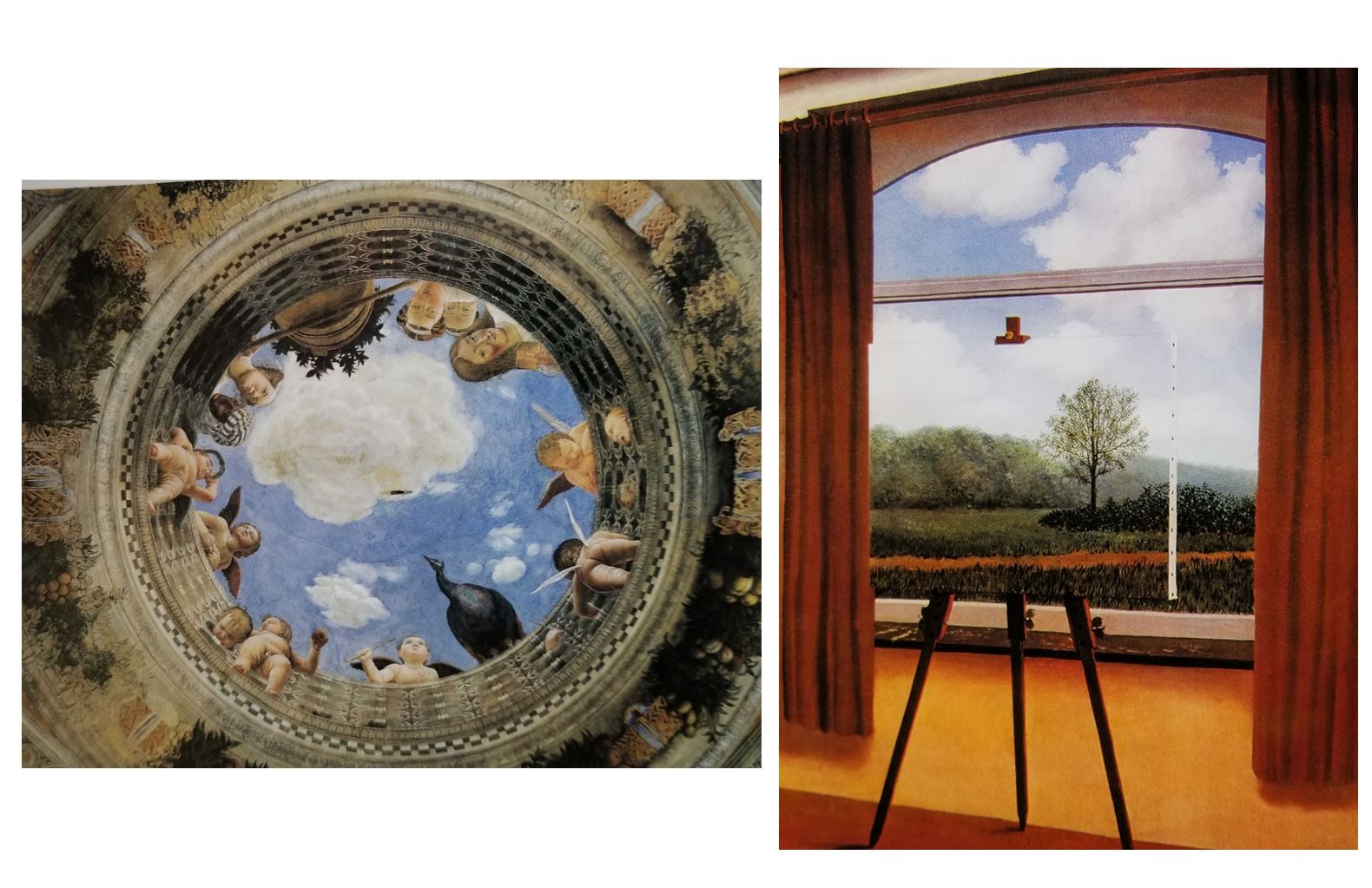48 Automatic Organizing – Camouflage and Illusions
CAMOUFLAGE techniques use some combination of colors, texture, lighting and shading, often designed to exploit Gestalt principles of perception, to make things hard to see or to cause them to perceived as something else. Camouflage is very often used by soldiers or hunters so they cannot be seen.
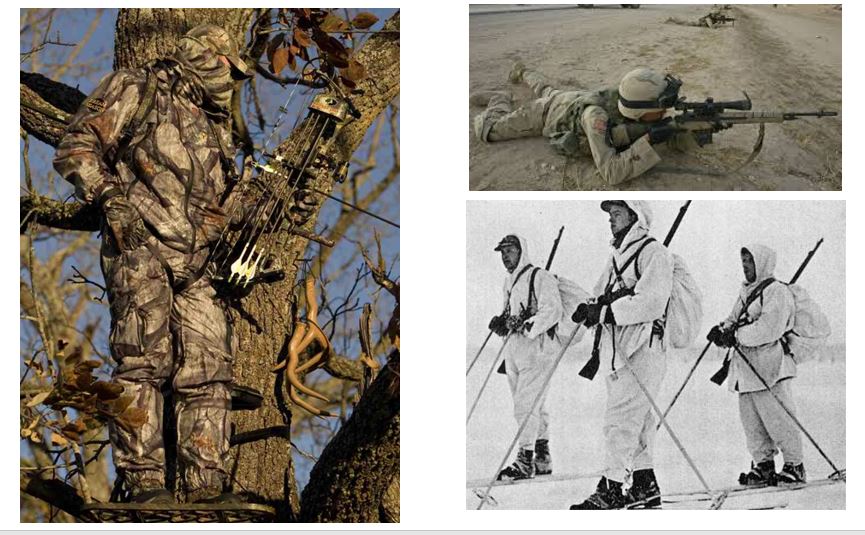
ANIMAL CAMOUFLAGE
Being able to hide from hunters or predators is obviously a good thing for animals, so it isn’t surprising that many animals have evolved to be hard to see in their usual habits.
Some animals have the ability to adapt their visual appearance to match their backgrounds. It should be obvious why the insect called a “walking stick” was given that name.
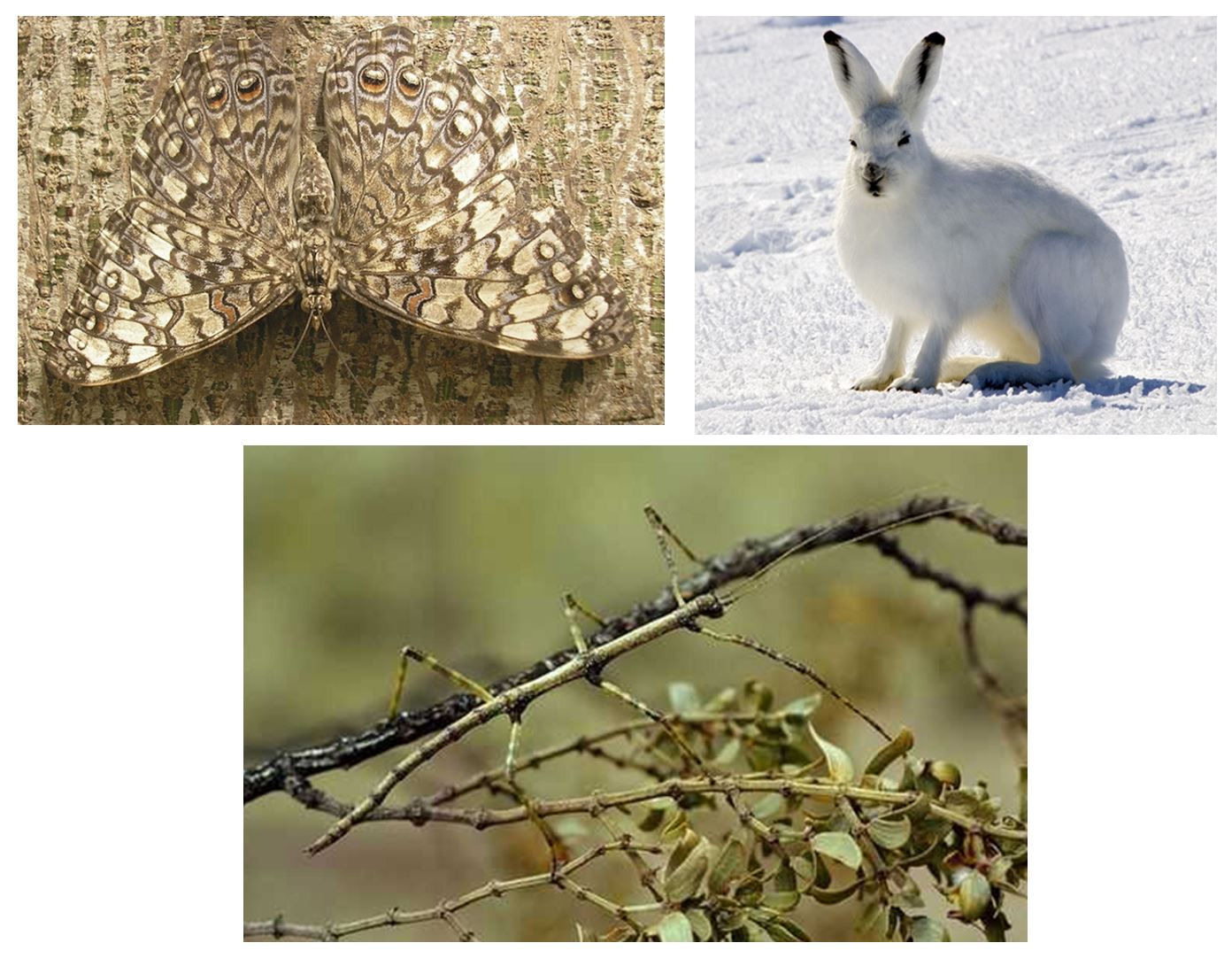
Camouflage is very common in animals that live underwater. Here are a spotted ray, flounder, cuttlefish, and leopard shark that are pretty hard to see against the ocean bottom.
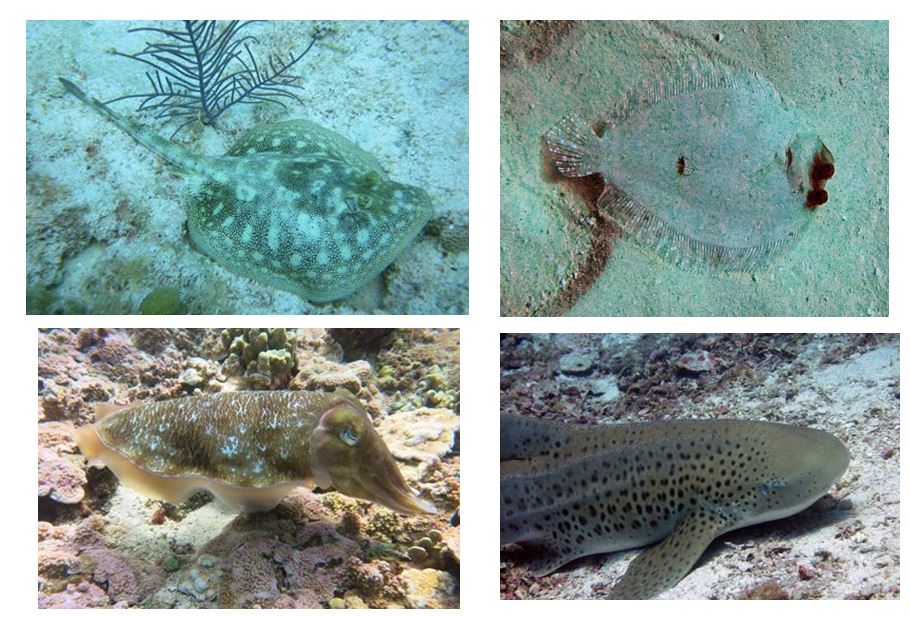
Illusions and “tricks of the eye”
Painters and designers often use Gestalt principles and other techniques to get people to see three dimensions instead of two and to otherwise create “tricks of the eye” (this is the English translation of the French “Trompe l’oeil” – (say “TROM PULL LOO-EE”) – what these illusions are more often called). Here are some interesting ones:
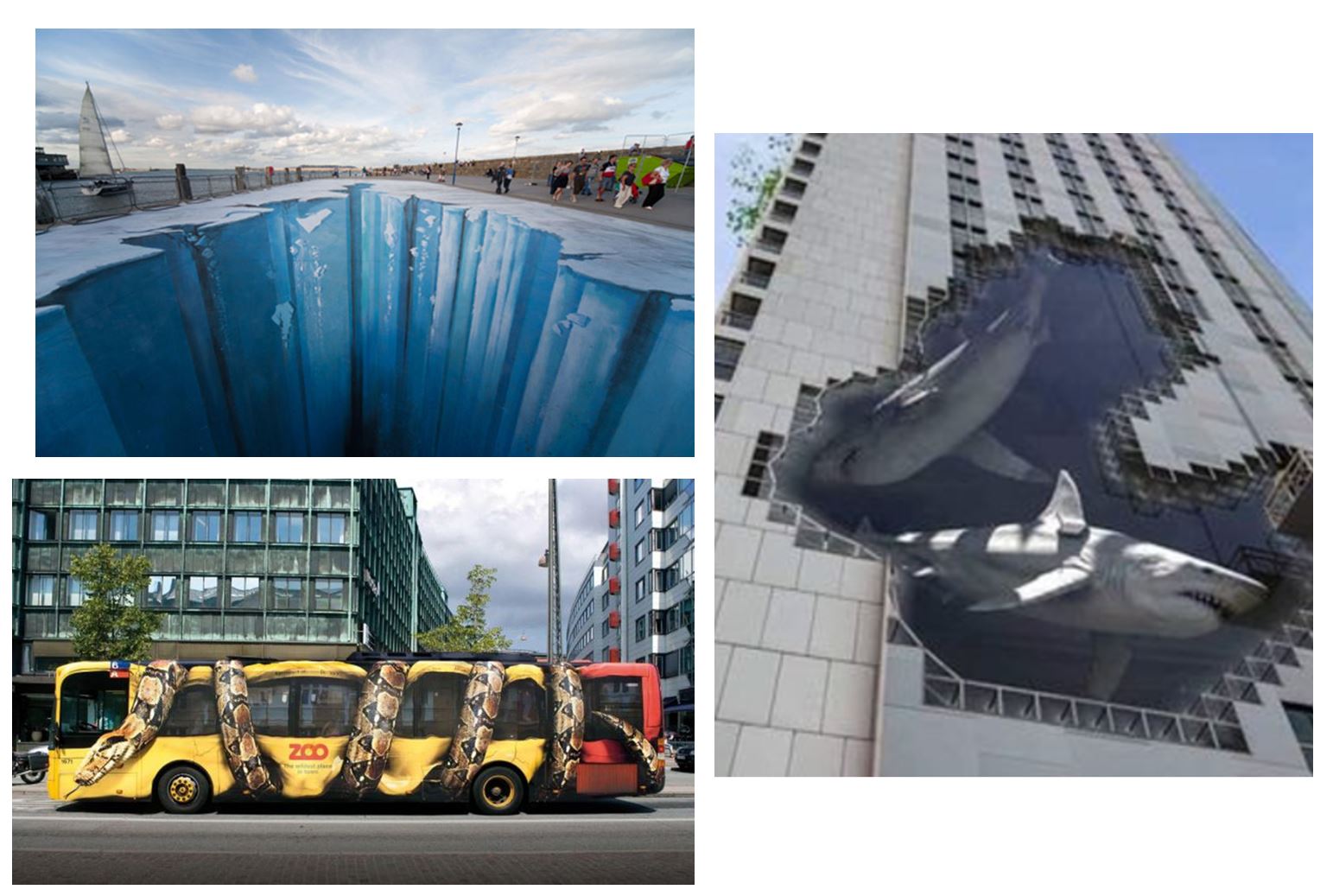
These techniques have a long tradition in art or architecture. On the left below is a 15th century painted ceiling by the Italian painter Mantegna that makes you see an open dome in the Mantua Palace even though it is painted on a flat ceiling. On the right is a 1933 painting by Rene Magritte – is it a painting, an open window, or both?
The artist says it is both at the same time: “In front of a window seen from inside a room, I placed a painting representing exactly that portion of the landscape covered by the painting. Thus, the tree in the picture hid the tree behind it, outside the room. For the spectator, it was both inside the room within the painting and outside in the real landscape.”